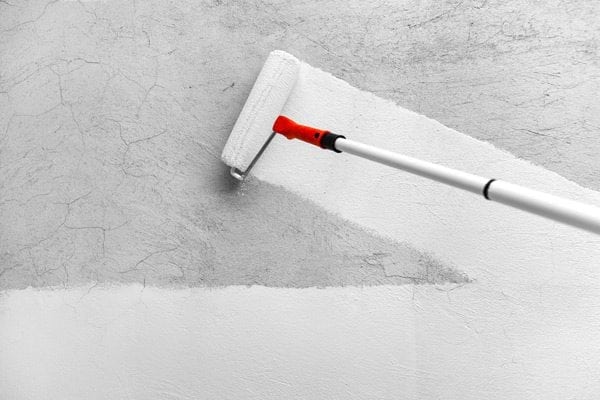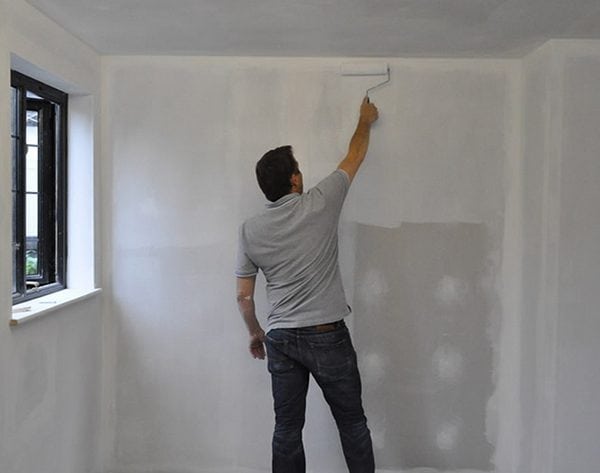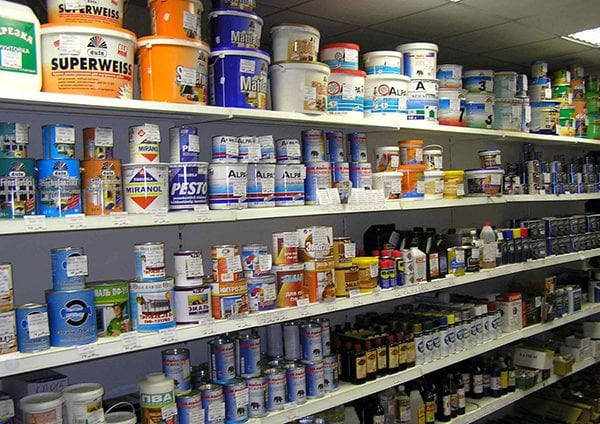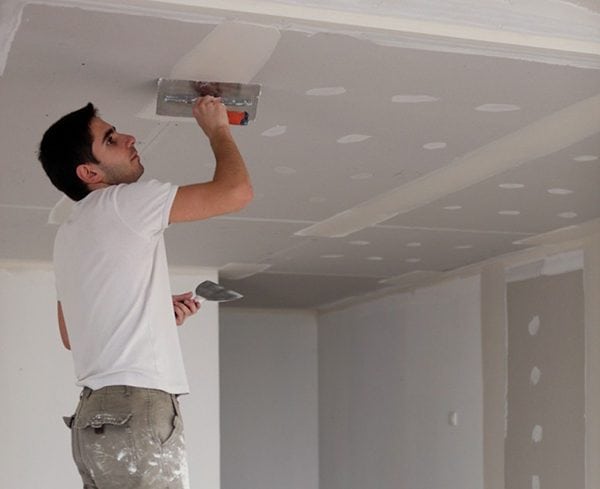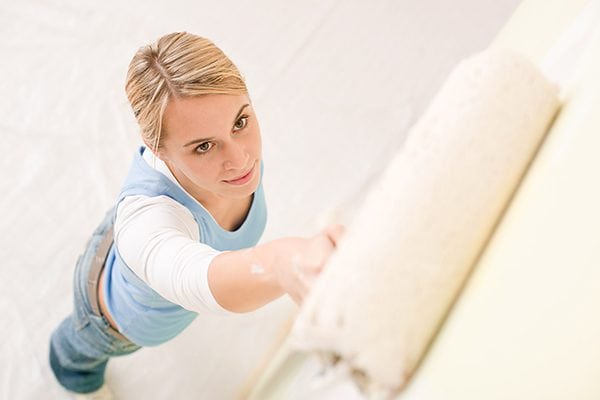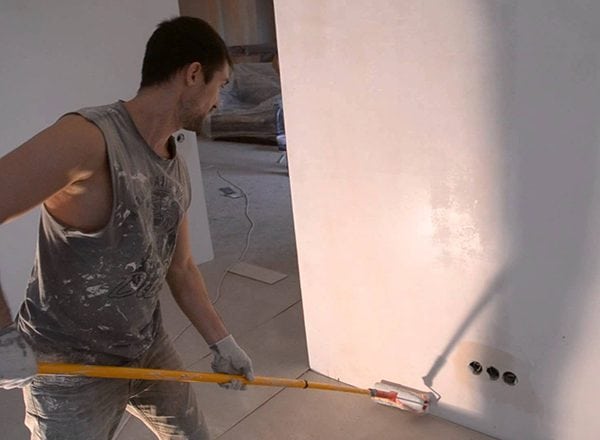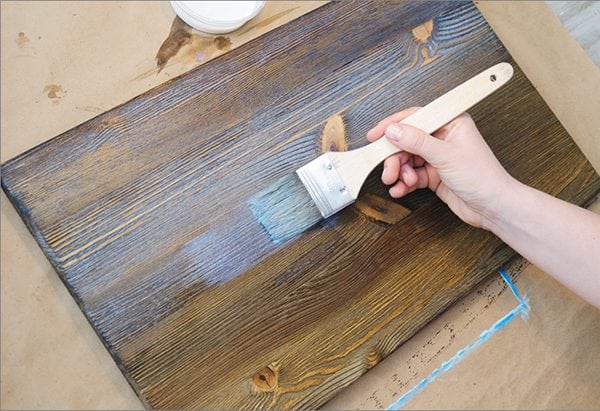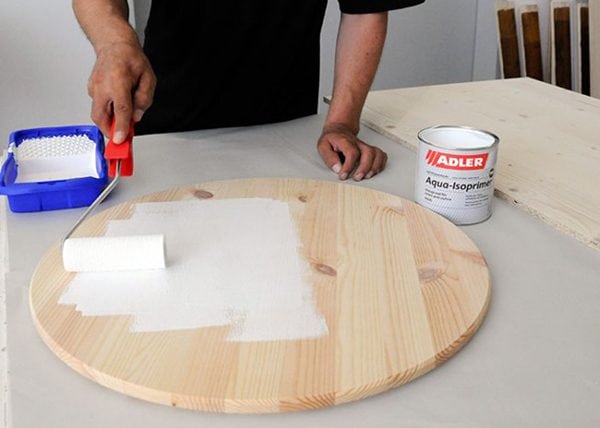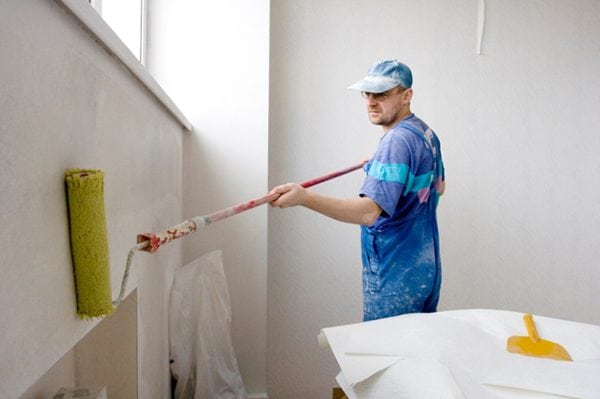The most common color background of the wallpaper is light. If the wallpaper is also thin, then they will not be able to hide the color and blemishes of the rough surface. A white primer is used to neutralize the color of the rough surface. White primers are used before applying a finish that differs in color from the rough.
- What else is useful primer
- Types of primers
- Primer for OSB
- Drywall Primer
- Primer coating
- Primer for whitewashed walls
- Primer for furniture
- Primer Tips
- Common primer errors
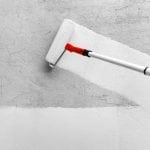
What else is useful primer
After the nails, screws, baseboards, all kinds of defects have been removed, a layer of putty is applied to the wall. Next, the wall is primed. Below are the reasons why the surface should be primed:
- Final dedusting, removal of dirt that could not be removed during puttying.
- Surface alignment.
- Reducing the consumption rate of the adhesive, as the soil clogs cracks and defects in the material.
- Improving adhesion (adhesion of dissimilar materials).
- Strengthening of the lower layer, as a result of which the material does not peel.
- The coating acquires water repellent properties.
- The surface retains the ability to “breathe”.
- Mold and mildew protection
Previously, the walls were pasted with newspapers or other paper before wallpapering. To some extent, this method replaced the primer. However, only modern soils can ensure the high quality of the work performed and the entire list of the above advantages of a primed wall.
to contents ↑Types of primers
When choosing a soil, it is recommended to proceed from the situation and tasks:
- Acrylic compounds are applicable to most surfaces except ferrous metals. They are free from unpleasant odors, dry in 2-4 hours.
- Alkyd mixtures are best suited for wood. These compounds also have excellent compatibility with tiles. Mixtures are not recommended for processing plaster and gypsum coatings. The drying period is from 10 to 15 hours. Alkyd mixtures are produced either on the basis of zinc chromate or on the basis of zinc phosphate. The latter are applicable only before staining with alkyd paints and varnishes.
- Glifthal soils are used in dry rooms. Most often used for priming metals. Dry out in about a day.
- Perchlorovinyl compounds are a great way to protect metal, but can be applied to plaster or concrete. A distinctive feature of perchlorovinyl is its quick drying (no more than an hour). For internal work, the use of such primers is undesirable because of their toxicity.
- Polyvinyl acetate primers dry for half an hour. However, such formulations are applicable only if the topcoat is polyvinyl acetate paint.
- Polystyrene compounds are used for the processing of rough coatings of wood or plaster. They are toxic and therefore not recommended for internal use.
- Phenolic mixtures are applied to wood and metal products. Drying time is from 10 to 12 hours.
Note! Sticking wallpaper or applying any other finishing material to the primed surface is permissible only after its final drying.
Regarding the nature of the treated primer surface, it is customary to classify as follows:
- Universal white primers are designed for substrates with a low degree of porosity. Such compositions include acrylic primer.
- Special primers are used in special cases, for example, for surface treatment in regularly moistened rooms.
- Deep penetration primers are used on loose and especially porous coatings that need to be strengthened.
Note! As a soil, you can use standard wallpaper glue. This is the most affordable, but not the best option, since in this case there is a likelihood of spots on the wall. Such an impregnating composition can only be used on perfectly flat surfaces.
to contents ↑Primer for OSB
Oriented particle boards perfectly absorb moisture. Therefore, they can not be glued wallpaper without first priming the surface. The treated coating will get a waterproof film, which will prevent swelling of the substrate when interacting with glue.
The joints between the panels should be filled with sealant or plaster. Seams can be reinforced before puttying. In this case, filling in the gaps is not necessary.
to contents ↑The best soil option for OSB is a white compound. The primer is applied in several layers.
Drywall Primer
For the processing of drywall sheets, deep penetration primers are best suited, which significantly improve the adhesive qualities of this material. In addition, the drywall primer must meet the following criteria:
- bind dust deposits;
- not be toxic;
- have resistance to moisture and temperature extremes;
- dry quickly.
For drywall sheets, only the composition that is intended for indoor use is suitable. External primers are not applicable for drywall.
to contents ↑Primer coating
Priming is performed as follows:
- We dilute the primer composition. To do this, we need a container (for example, a bucket). You can breed the mass in plain water. The specific proportions and temperature of the liquid are indicated by the manufacturer on the package.
- Stir the mixture thoroughly. An electric drill is useful for this. As a nozzle, you can use wire.
- Apply the mixture to the surface with a wide brush. The layer should be uniform, there should be no smudges or puddles.
- For a perfectly smooth wall, it is better to use not a brush, but a paint roller. So the work will go faster.
Primer for whitewashed walls
Many masters believe that it is not necessary to apply soil to whitewashing.
The following arguments are used as arguments:
- Strengthening the whitewash will still fail, so priming is a waste of time.
- Putting the mixture on lime whitewash is not only pointless, but also fraught with peeling of this material from the base even before the moment when the soil is set.
- If there are cracks on the whitewashed surface, they must be repaired. In this case, the whitewash layer still needs to be removed.
- If the surface is to be painted, the whitewash must be removed, since otherwise normal adhesion cannot be achieved.
Many craftsmen apply the soil on a whitewashed surface, and at the same time they initially create a feeling of quality work. However, by morning, such a surface is covered with cracks. As a result, you still have to remove the whitewash, but now with a layer of soil. This approach to decorating is inefficient and expensive. In addition, alterations lead to a loss of time.
So, it is impossible to apply soil to whitewashing. The reason is that whitewashing is kept on the ceiling only because of its light weight. It is necessary to create an additional load on the whitewash, and the finishing material will inevitably begin to exfoliate.
to contents ↑Primer for furniture
Furniture can also be primed with a white compound if it is supposed to be painted or varnished. Very often, such manipulations are done with old furniture in need of restoration.
Preparing for repainting is a very important stage of work.How well the surface is prepared depends on how the paint “grabs” and what kind of texture the coating will produce. Also, the drying rate of the surface and the operational period of the furniture depend on the soil.
Instructions for completing the work:
- We remove peeling varnish or paint from the surface.
- Grind the surface thoroughly.
- We apply putty, leveling irregularities, closing cracks and other defects.
- Apply a layer of white primer. It will completely hide the old coating.
Note! The rough coating of furniture should not be glossy, since in this case it will not work to ensure good adhesion to the paintwork material.
There is another important point - a tree can produce acid such as tannin, and this will damage the layer of paint. So, the primer layer will simply block the manifestation of tannin, which means you can be calm for the quality of the paint.
Well, then the furniture is painted in one direction, along the wood fibers. All layers are applied only after the previous ones have dried. In order for the layers to dry faster, there is no need to create a draft, just light ventilation.
to contents ↑Primer Tips
When priming, it is important not to make mistakes in order to ensure the necessary quality of work. Below are some helpful tips for working with primers:
- There is a common misconception that priming is only necessary in new buildings. This is not so: a primer coat is absolutely necessary for any surface.
- The minimum required number of soil layers is two. Each subsequent layer of soil (and any finishing material) can be applied after the previous layer has completely dried. Moreover, the soil should not just dry, but dry.
- There are no recommendations for accelerating the drying of the soil, except for creating a certain favorable microclimate in the room (humidity, temperature and air circulation).
- Do not buy cheap formulations. It is better to save a little on paint or varnish than to buy a cheap primer. After all, no matter how high-quality the paintwork material is, it will begin to exfoliate if the surface is not primed.
- The primer should not smell like glue. If there is such a smell, most likely it is a fake.
- The average consumption of material per square meter is 150 milliliters.
Common primer errors
There are a number of mistakes when applying the soil, typical for beginners:
- Water-based and dispersion paints and varnishes (pigmented primers) cannot be used as a primer. These paints do not have the properties necessary for priming materials.
- If the first layer is applied with a primer, and the second is still used dispersion or water-based paint, stains will surely appear on the surface.
- A primer coat in almost all cases will not be enough.
Priming the surface is a functionally necessary component of the finishing work, which in no case can be ignored. All subsequent repair steps depend on the quality of the primer.

